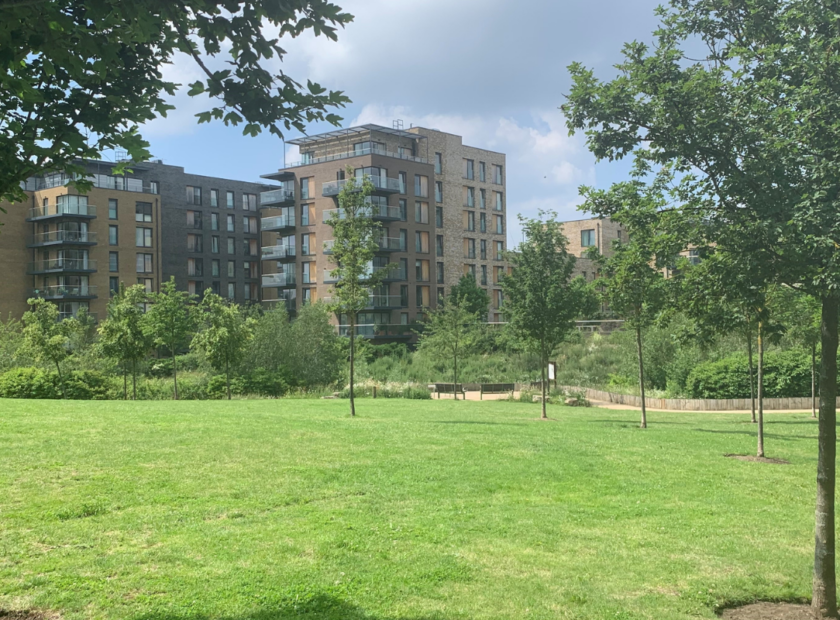Charlotte Llewellyn shares reflections from the APPG on New Towns conference in East Kilbride
This month, the All-Party Parliamentary Group on New Towns was in Scotland hosting a conference exploring the lessons from the UK’s New Towns. The New Towns programme of the mid-20th century remains one of the UK’s most ambitious feats of urbanism and they are now home to 2.8 million people. More than three-quarters of a century has passed since the passage of the New Towns Act, and New Towns continue to provide useful lessons on how to create new communities and regenerate existing settlements.
The conference was held in Scotland’s first New Town, East Kilbride, and opened with a warm welcome from APPG Chair and local MP Dr Lisa Cameron, and South Lanarkshire Council Leader Joe Fagan. Having recently celebrated its 75th anniversary, Cllr Fagan reasoned that now was a good time in history to come to East Kilbride. The speakers reminded us that the New Towns set high expectations and attracted ambitious residents to Scotland’s five New Towns. While they recognised there are challenges facing the town, including loss of agency and industry, the planned regeneration offered the town’s current residents a renewed sense of hope. The themes of adaptation, innovation, and identity reoccurred throughout the conference and are explored in more detail below.
Adaptation
Over the last few years, several New Towns have celebrated milestone anniversaries. Since their designation, how people have navigated and interacted with places has changed significantly, from the proliferation of cars to the rise of online retail. New Towns are living landscapes continuously shaped by the people inhabiting them.
New Towns are living landscapes continuously shaped by the people inhabiting them.
Several case studies from the conference, including Warrington, Bracknell, East Kilbride, and Cumbernauld, touched upon the importance of adapting New Towns to life in the 21st century. The case study on Warrington focused primarily on housing, exploring how Warrington’s housing stock has changed and the challenges posed by a falling number of housing completions and issues of affordability.
The remaining case studies focused on reimagining town centres, exploring how to adapt and modernise them, from incorporating more active travel routes and space for pedestrians to making the town centres more versatile and flexible. At their core, the case studies outlined the need for a holistic, whole-place and people-centred approach to planning. New Towns are not static. Therefore, local planning authorities need the funding and capacity to reimagine them for current and future inhabitants.
Innovation
The New Towns programme was an inherently ambitious and innovative solution to the challenges facing post-war Britain, from their approach to long-term stewardship to utilising national policy to implement a strategic and cohesive approach to placemaking. While some innovations, such as experimental building techniques, did not work out in the long term, they reflect a pioneering attitude of trying something new.
Today, the UK’s New Towns face many challenges, from the concurrent degradation of housing stock to fragmented land ownership. These issues are compounded by the challenges confronting the rest of the UK, including the housing crisis and climate change. Scotland’s National Planning Framework, highlighted in Session Two of the conference, offers an example of how policy can work to ensure a strategic, holistic, and sustainable approach to planning. The innovative approach of the original New Towns reminds us that ambitious, creative, and strategic planning is the key to tackling some of the main challenges of our time.
As someone new to the world of New Towns, I have been struck – both at the conference and during my time at the TCPA – by the passion and dedication of New Town advocates.
Identity
As someone new to the world of New Towns, I have been struck, both at the conference and during my time at the TCPA, by the passion and dedication of New Town advocates. While there is often a light-hearted sense of competition about whose New Town is the largest or oldest, there is a common bond uniting the UK’s New Towns. The New Towns were aspirational and about providing the new residents with a better quality of life and more opportunities. The speakers throughout the conference emphasised that people were and must remain at the heart of the New Towns programme.
Residents have a pivotal role to play in the creation of new communities. On the Study Tour of East Kilbride, we heard about the eagerness with which residents wanted to hear about and engage with the planned regeneration of the town centre. Furthermore, the presentation on Harlow explored how art, culture and celebrating the history of a New Town can contribute to a sense of collective identity. The identity of a New Town is shaped by its people and the built environment. A strong sense of identity and unity can act as a catalyst for a place’s renewal.
The regeneration of the UK’s New Towns depends on access to funding, the right personnel and skills, and a political consensus to act.
The conference served as an important reminder about what makes the UK’s New Towns important. While they were not perfect, they offer many lessons on what a bold, strategic, and holistic approach to planning a new community can achieve. The regeneration of the UK’s New Towns will each be unique, but they all depend on access to funding, the right personnel and skills and a political consensus to act. In recent months, a new generation of New Towns has been making headlines, and our existing New Towns can provide vital learning for this endeavour. Finally, this conference demonstrated that there is a group of passionate New Town advocates that must be tapped into to offer meaningful advice and guidance.
Lessons from the conference will be shared with members of the APPG and feed into the wider work of the group and its members.
You can find out more about lessons from the New Towns at: A new future for New Towns – Lessons from the TCPA New Towns Network – Town and Country Planning Association




